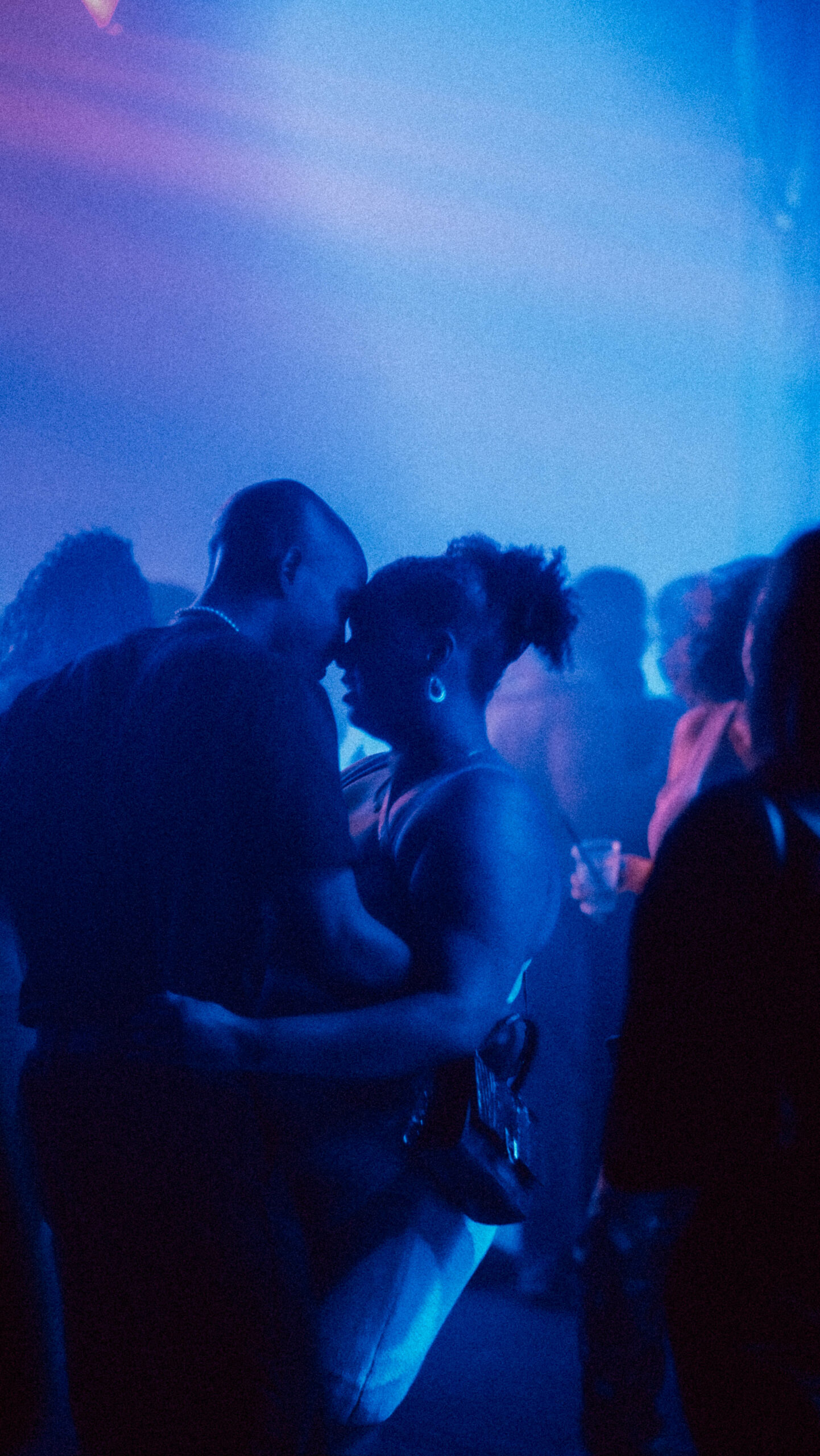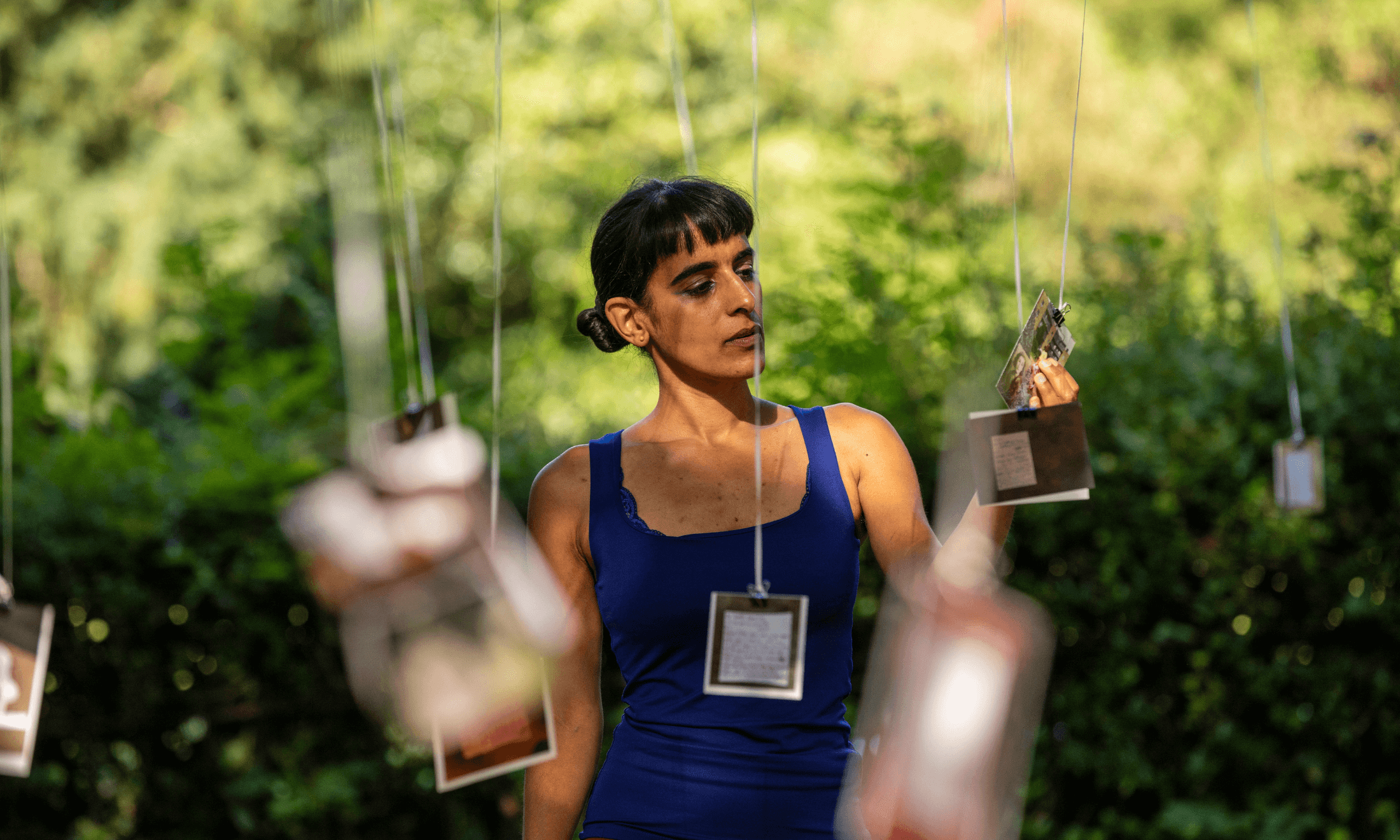
Jemima Yong
Tara Fatehi Irani is the Iranian performance artist mishandling archives to set them free
Mishandled Archive is a project questioning ideas around borders and how they operate, as well as how our bodies, stories and photographs can travel.
DiyoraShadijanova and Editors
27 Sep 2021
When arriving at the live performance of Tara Fatehi Irani’s Mishandled Archive in Peckham Rye Park, I spotted people congregating around a tree with hundreds of little photographs hanging from its thick branches. Strung at different heights, the paper cards twirled and swayed in the wind with some attendees trying to hold them down to take a proper look at what they depict. As light filtered through the canopy of the woodland, there was a gentle flugelhorn playing in the background and people murmured to one another as they waited in anticipation for the performance.
Mishandled Archive is a multi-stage project including a year of daily site-specific actions (of dancing and dispersing photographs from history), an Instagram archive, a book and a performance installation. The project started in 2017, with Tara dispersing 365 family documents and photographs relating to Iran through performative actions such as dances in public space. By doing this, she wants to question our traditional relationship with handling archives – in that it’s normally a very clinical process of sorting through documents in a damp room – and instead suggests ‘mishandling’ archives as an alternative way to engage with them.
But why is the artist trying to redefine archives? Tara thinks that the lengths we often go to preserve archives by keeping them in temperature-controlled rooms and inaccessible or mysterious locations mean that not many people get to see them. “Sometimes going against that is the thing that helps you connect with more people.” Mishandled Archive plays with this theme a bit, as next to the title for each photograph dispersed by Tara in 2017, she writes down the temperature which she measures with a thermometer she always carries in her bag and the time she performed the dance. “I see it as a way of handling. It’s a way of taking care of the archive, which is not the usual kind of protective method, but it’s actually embracing that the archive might be torn apart, might be dispersed, it might be left under the rain, it might be it might go under people’s feet, but that actually creates an affective connection that might be more valuable than keeping it safe.”

Tara Fatehi Irani (2018) via Instagram 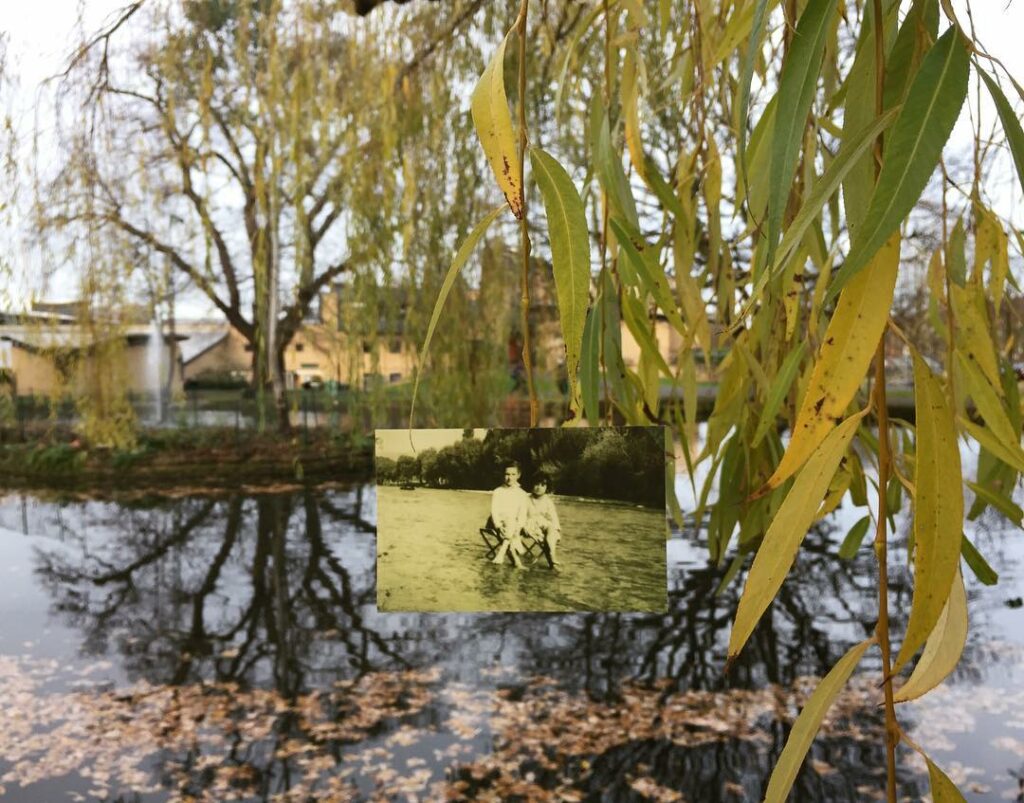
Tara Fatehi Irani (2017) via Instagram
She also ‘mishandles’ through dance, photography, storytelling, encounters with strangers and social media. And now, three years after she had finished the daily performances, I was invited to witness an hour-long performance installation of the project in South London.
The artist began by telling a made-up story of how the project started with an international phone call she received from two elderly women. “We used to live in the same area in west Tehran… years ago. They are two sisters and prefer to be known by their combined initials ‘ShaDi’”, she explained to the audience. They spoke at Tara about everything, giving her “confidential and personal information from people’s memories of prisons, executions, love affairs, shootings, the Shah [a title for the former monarch of Iran], war, secret religions, illegal immigration, legal migration, deception, syphilis, Winston Churchill.” But after the women hung up on Tara, she says she never heard from them again.
“It’s about bringing family histories together and through the body, but also sharing how and what an unachievable task it is to imagine that any story can ever be fully told and understood”
According to this story, this encounter compelled her to search for the people they were talking about. She trawled websites, newspapers and archives to see if these people even existed. Eventually, she managed to trace the stories to people living in Iran, Turkey, France, Cuba, Germany, the United States, Sweden and Honduras. Reaching out to all the living contacts she could find, most of them allowed her to access their personal albums – or personal archives – in exchange for digitising their contents. That is how the artist ended up with “over two thousand family photographs, letters, correspondence from prison, identity cards, receipts, newspaper clippings, legal documents, postcards, wills and obituaries.”
None of this is necessarily true, but it makes for a compelling story. Tara makes up this tale, alongside others during the performance, to highlight the connection between history and fiction, as well as her interest in female storyteller figures such as Shahrzād and Dīnāzād from the One Thousand And One Nights. “Their repeated daily storytelling resists the dominant power of their times”, she explains. The artist did however actually ask her family and people she knew for digital access to their archives. She copied the contents and spent a year dispersing them.
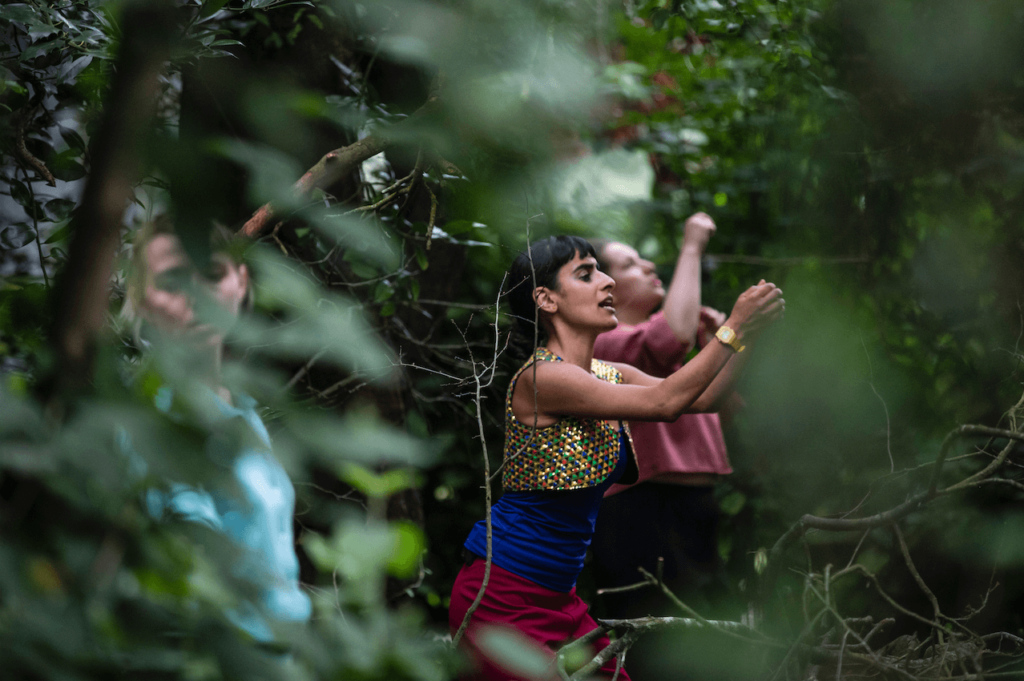
Tara Fatehi Irani in Mishandled Archive (2021), with Maja Laskowska and Amal Khalidi. Photograph by Jemima Yong.
Tara, who wears a glittering multicoloured vest on top of a blue tank top and crimson trousers, dances, whistles, sings, talks and shouts all within the space of an hour. She has an infectious energy, with her mood changing and eliciting all sorts of emotions from those participating in the performance. Additional performance artists help her in bringing the archive alive by acting out scenes, reading monologues in different languages, and joining in with the interpretive dances. At times the performance is a confusing experience, but perhaps that’s the intention – showcasing how overlapping narratives don’t have to make sense and that revisiting archives often results in us trying to create our own narratives out of disjointed bits of information.
“For me, it’s this multiplicity of actions and emotions and stories. In some ways, it’s about the impossibility of telling a story in whole and this disjunction,” says the 34-year-old artist, who was born in Tehran but is now based in London. “It’s about bringing family histories together and through the body, but also sharing how and what an unachievable task it is to imagine that any story can ever be fully told and understood. But for me, it’s all about creating an affective connection.”
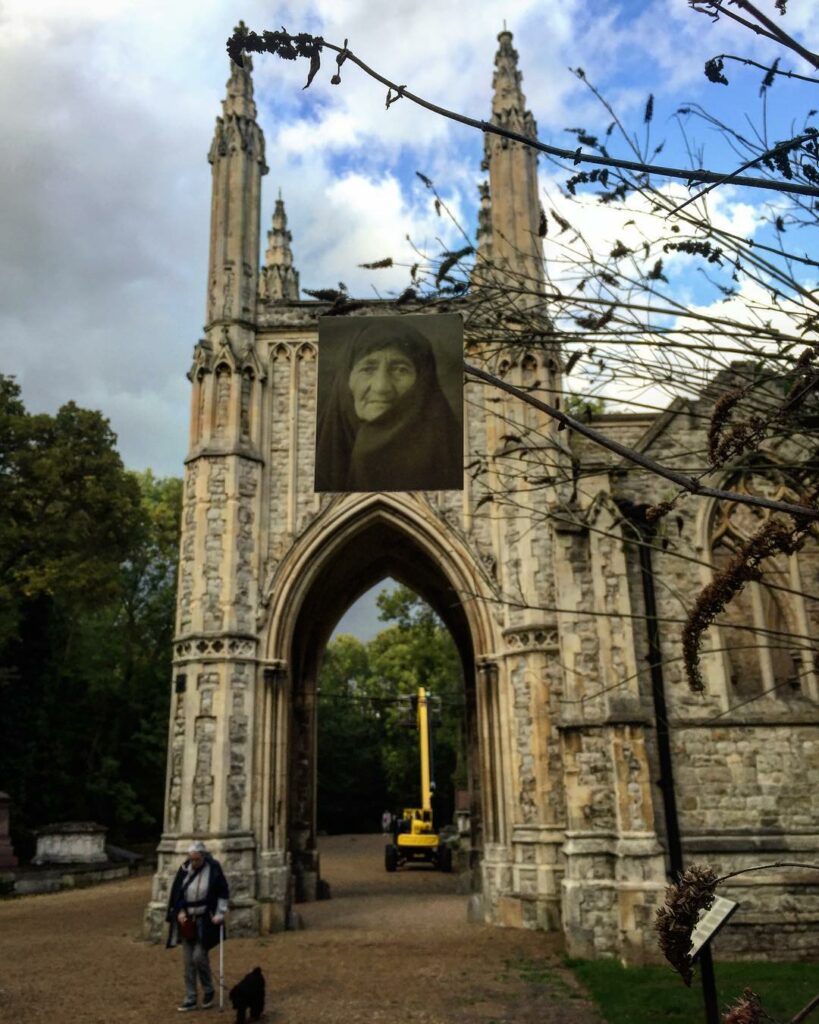
Tara Fatehi Irani (2017) via Instagram 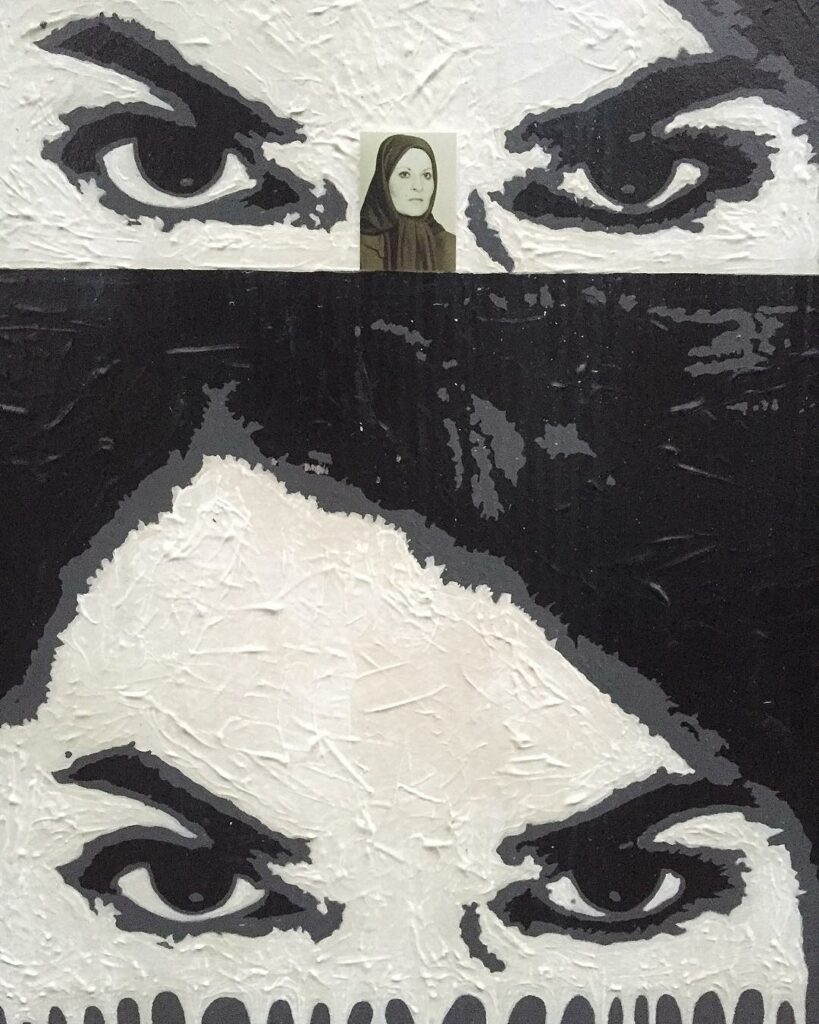
Tara Fatehi Irani (2017) via Instagram
Tara’s art is interested in everyday life – in finding the extraordinary in the ordinary. “I’m really keen on being an attentive observer to my surroundings, and seeing details that would normally go unseen,” she explains. The artist had been interested in collecting things since she was very young – newspaper clippings, objects, essentially samples of everyday life and now this hobby seems to have expanded into her practice. “My work kind of shifts towards the political and towards questioning history and connections with, translation and cultural connections, and all of those things. I think the underlying thing is, attention to details that will normally go amiss.”
With Mishandled Archive, Tara claims to be revisiting and rewriting history. “I like putting people in places that you don’t expect to see them, but then they start to feel really like part of that landscape in some way.” She explains how someone may not expect to see a photograph of a woman in a headscarf or chador on a tree in Nunhead cemetery (in South London), but after looking at it, realising that she could totally be there. “It’s questioning ideas around borders and how they operate, as well as how our bodies and photographs can travel.”
“It’s questioning ideas around borders and how they operate, as well as how our bodies and photographs can travel”
Tara also reimagines the archive by incorporating social media and technology as she posted one photograph a day on Instagram, which she says added another layer of communicating with people she didn’t know. “There were people who would find the pieces on the street and then they would get back in touch with me online and have an exchange through #MishandledArchive.”
Repeating the same task for 365 days must have been a huge challenge, but the artist looked to artistic predecessors like Tehching Hsieh who did year-long projects like punching a clock every hour for a year or not entering buildings or shelter of any sort for a whole year. “Doing small, repetitive, ongoing tasks, not only tested the boundaries of my dedication, but also, when you make a little something every day, it accumulates. I’m really interested in this accumulation of simple things you can put together,” Tara explains.
After a month or so of doing the daily tasks, a project develops, but after a whole year, the artist is suggesting a new methodology of how we engage with histories, narratives and archives.
Find out more about Tara Fatehi Irani as well as the Mishandled Archive book here.



